Costa Rica is a small, mountainous country in Central America. It is bordered by Nicaragua on the north, the Caribbean Sea and Panama on the east, and the Pacific Ocean on the south and west. A chain of rugged mountains crosses central Costa Rica from northwest to southeast. A few of the highest peaks in this chain are active volcanoes. Tropical forests grow on the country’s coastal lowlands.

Spanish explorers arrived in what is now Costa Rica in the early 1500’s. Rumors that deposits of gold and other precious metals were supposedly mined in the region led the Spaniards to name the land Costa Rica, which means rich coast. But the explorers found that the area had little mineral wealth.
Today, about three-fourths of Costa Rica’s people live on a fertile plateau in the mountains in the central part of the country. San José, the capital and largest city, lies in this region. Hillsides covered with coffee trees surround San José. Pineapples and coffee rank among the country’s chief agricultural exports. Bananas, another major export, grow on large plantations near the coasts. Computer chips and medical equipment, manufactured near San José, emerged as leading exports in the late 1990’s.
Government
Costa Rica is a democratic republic. Its Constitution was adopted in 1949. A president serves as the nation’s chief executive and head of state. The people elect the president to a four-year term. A president may run for the presidency again after being out of office for two terms. The president, two vice presidents, and the members of the Cabinet make up the Council of Government. The council carries out the day-to-day operations of the government.
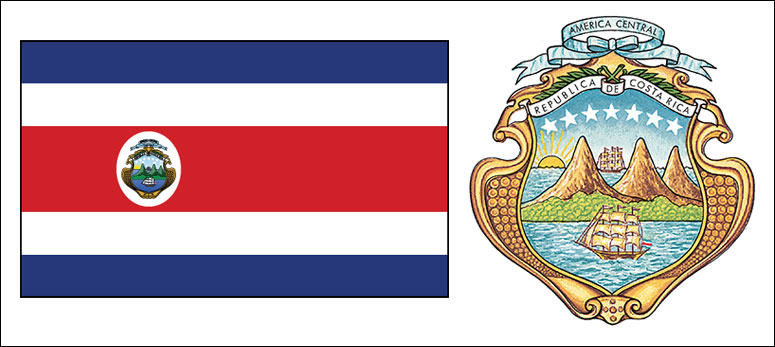
The Legislative Assembly is Costa Rica’s legislature. It has 57 deputies elected by the people to four-year terms. The deputies may not be elected to two terms in a row. The Supreme Court of Justice, the nation’s highest court, has 22 justices appointed by the legislature.
Costa Rica’s army was abolished in 1948. But military forces may be organized for national defense if necessary.
Costa Rica has seven provinces, which are divided into about 80 cantons (counties). A council elected by the people governs each canton. The cantons provide fire protection, sanitation, water, and other local services.
All citizens who are at least 18 years old are required to vote in national elections. Costa Rica’s major political parties include the National Liberation Party (PLN), the Citizen Action Party (PAC), the Libertarian Movement Party (PML), and the Social Christian Unity Party (PUSC).
People
Costa Ricans take great pride in their country’s heritage of democratic government and social equality. They also value strong family ties.
Nearly all Costa Ricans speak Spanish, but many Black residents speak a Jamaican dialect (local form) of English. About 75 percent of Costa Rica’s people belong to the Roman Catholic Church. Evangelical Protestantism is growing rapidly.
San José is the capital and largest city of Costa Rica. It is the center of a large metropolitan area. Other large cities in the country include Alajuela and Limón.
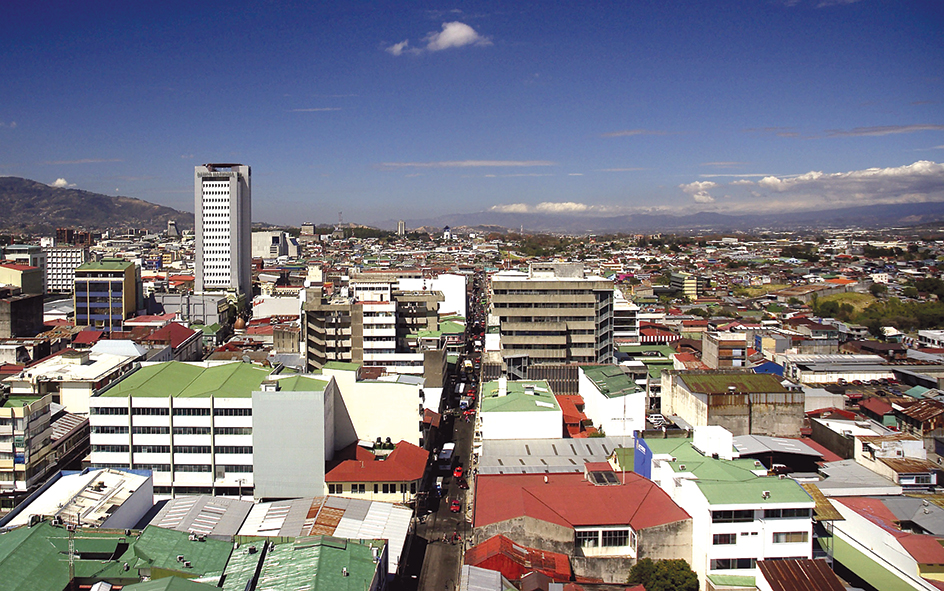
Ancestry.
Many Spanish colonists who settled in Costa Rica in the 1500’s and 1600’s married the Indigenous (native) people who already lived there. Their descendants are called mestizos. Today, mestizos and white people of unmixed ancestry make up a majority of the population.
About 3 percent of the population is Black, and about 1 percent is Indigenous. Black people live mainly along the Caribbean coast. Their ancestors came to Costa Rica from the island of Jamaica during the late 1800’s to build railroads and to work on banana plantations. The Indigenous people live in isolated communities in the highlands and along the Caribbean and Pacific shores. They continue their traditional ways of life. Since the 1980’s, a large number of Nicaraguans have migrated to Costa Rica.
Housing.
Costa Rica’s farmers typically live in brightly painted wooden houses with tin roofs. Most of the country’s city people live in row houses, which look alike and are attached to one another in a row. Many Costa Ricans decorate their homes with plants and flowers. Wealthy families own spacious ranch-style or Spanish-style homes surrounded by gardens.
Food.
The diet of most Costa Ricans includes beans, coffee, corn, eggs, rice, squash, and such tropical fruits as bananas, guavas, mangoes, oranges, and pineapples. Most Costa Rican families also serve beef, fish, poultry, and many kinds of soups. Costa Ricans often prepare tamales (ground meat and corn meal steamed in banana leaves) and tortillas (thin, flat bread made from corn flour).

Education.
Almost all of Costa Rica’s people can read and write. Costa Rican law requires all children to complete elementary school. Students who graduate may attend secondary school and then enter a university. The country has several universities, including the National University in Heredia and the University of Costa Rica near San José.
Recreation.
Costa Ricans enjoy spending their leisure time outdoors. Many of them play soccer, the national sport, in neighborhood fields. Basketball, tennis, and swimming are also popular. Many Costa Ricans take part in colorful festivals on religious holidays. Bullfights, fireworks, and masked parades attract thousands of Costa Ricans and foreign tourists to San José during the annual Christmas festivals.
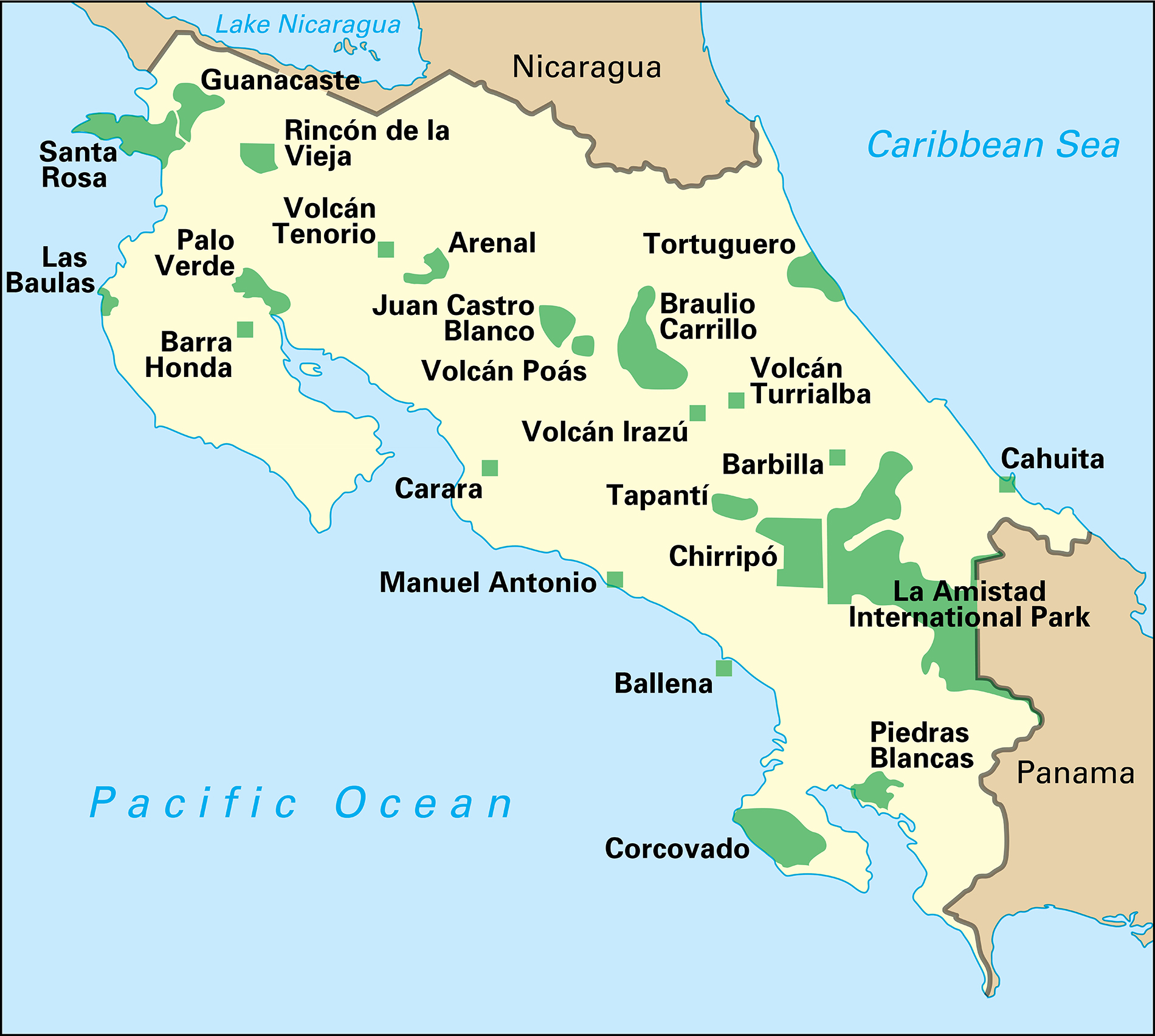
Costa Rica’s extensive park system attracts many tourists. The system includes sandy beaches where sea turtles come to lay their eggs, tropical rain forests that are the homes of monkeys and colorful birds, and several active volcanoes.
The land and climate
A chain of high mountain ranges, which are called cordilleras, crosses central Costa Rica from northwest to southeast. The cordilleras divide the country into three land regions: (1) the Central Highlands; (2) the Caribbean Lowlands; and (3) the Pacific Coastal Strip.
The Central Highlands
consist of two large areas of fertile farmland—the Meseta Central (Central Plateau) and the Valle del General (Valley of the General). The steep cordilleras surround each area. The Meseta Central is the country’s heartland. About 70 percent of the people live there. The Meseta’s rich volcanic soil and favorable climate also make it the country’s chief coffee-growing region. Daytime temperatures range from 75 to 80 °F (24 to 27 °C) the year around. The area receives about 70 inches (180 centimeters) of rainfall a year. The Valle del General lies to the southeast. It is an agricultural region of hills and plains. Daytime temperatures range from 80 to 90 °F (27 to 32 °C). Yearly rainfall averages about 110 inches (279 centimeters).

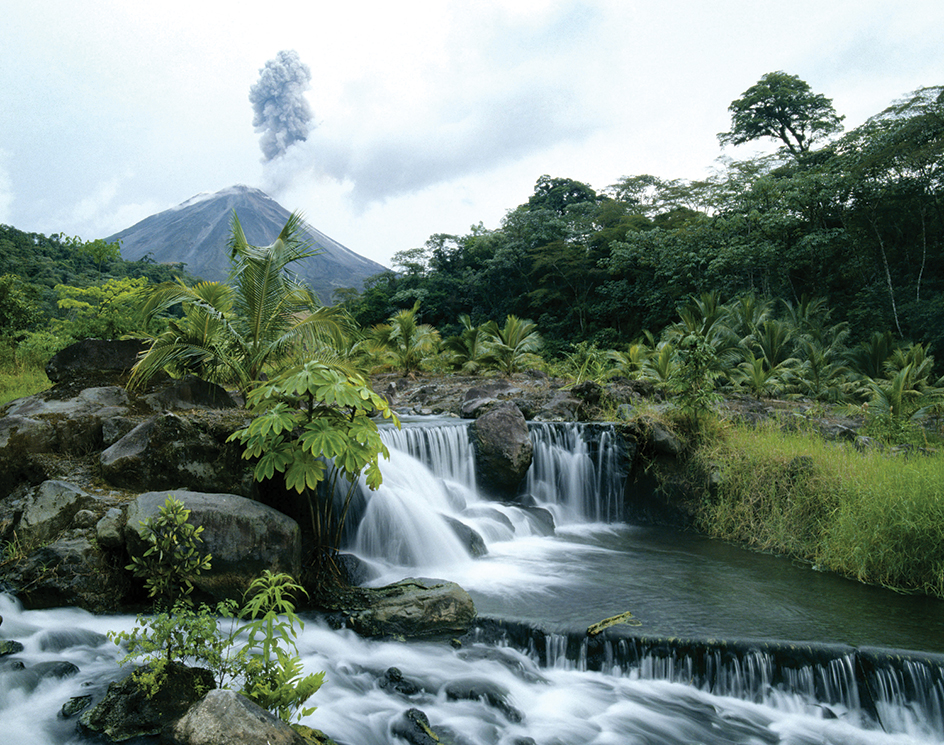
The Caribbean Lowlands,
a wide band of swampy tropical jungles, lie along the east coast. The daytime high temperature averages about 100 °F (38 °C). Yearly rainfall ranges from 150 to 200 inches (381 to 510 centimeters).
The Pacific Coastal Strip
is largely an area of lowlands along the west coast. Low mountains rise along most of the shore. This region has an ideal climate for growing bananas. Daytime temperatures range from 77 to 100 °F (25 to 38 °C). The annual rainfall totals about 130 inches (330 centimeters).
Economy
Costa Rica has a stable economy and much foreign investment. The country’s most valuable natural resource is its fertile volcanic soil. Forests of oaks, pines, and tropical hardwoods cover much of the country’s land. Mining is unimportant to Costa Rica’s economy.
Many of Costa Rica’s workers are engaged in farming or ranching. Bananas, beef and dairy cattle, cassava, coffee, hogs, palm oil, pineapples, poultry products, rice, and sugar cane rank among the leading agricultural products. 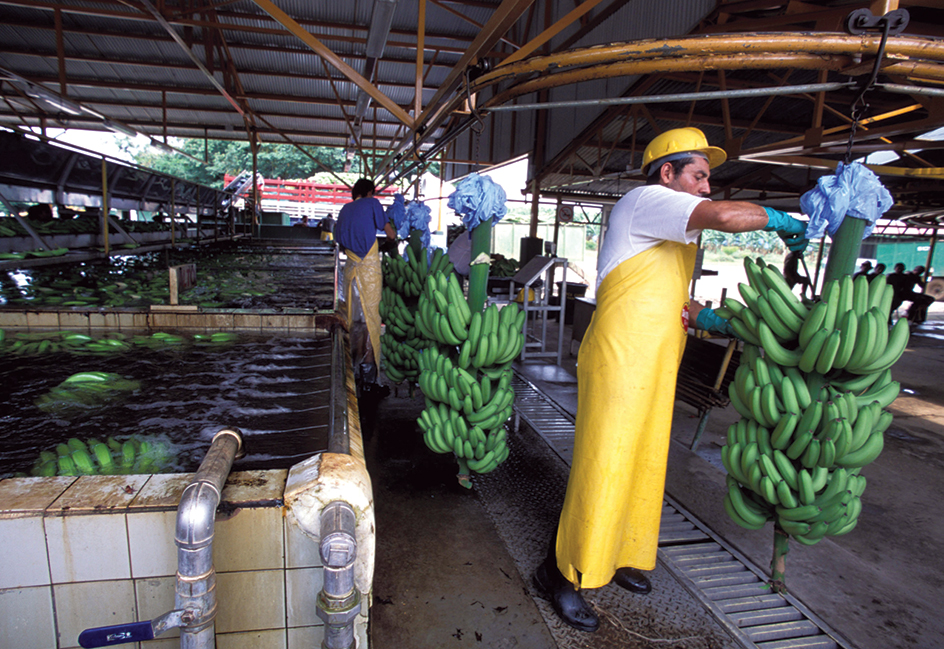
Manufacturing employs much of the labor force and is growing in importance. The leading manufactured products include clothing, construction materials, fertilizer, medical equipment, pharmaceuticals (medicinal drugs), processed foods, and textiles.
Costa Rica imports more than it exports. Its chief imports include chemicals, machinery, and petroleum. Its leading exports include bananas, coffee, medical equipment, pineapples, seafood, and sugar. The United States is Costa Rica’s leading trading partner. Other major trading partners include China, Guatemala, Mexico, and the Netherlands. Costa Rica belongs to the Central American Common Market, an economic union that was formed to stimulate trade among its members.
The Pan American Highway and other roads link all of Costa Rica’s provincial capitals (see Pan American Highway). Liberia, Limón, and San José have international airports. The country has both state-owned and privately owned radio and television stations. Cellular telephone and Internet usage is growing rapidly in the country.
History
Indigenous peoples lived in what is now Costa Rica before Europeans arrived in the area. By 1000, the Corobici people had settled in the northern valleys, and the Boruca had migrated to lands in the south. The Carib, Chorotega, and Nahau peoples arrived in the 1400’s. Most of them raised crops near their villages and hunted small game.
Colonial period.
Christopher Columbus, an Italian sea captain in the service of Spain, arrived in Costa Rica in 1502. False rumors of gold deposits in the area soon lured hundreds of Spaniards to the new land. Some stayed to become farmers in the Central Highlands. Governor Juan Vásquez de Coronado founded the first permanent settlement at Cartago in 1564. Many Spaniards tried to enslave the Indigenous people, but most of the Indigenous groups fought fiercely to stay free.
Independence.
Costa Rica remained a Spanish colony until 1821. That year, Costa Rica and Spain’s other Central American colonies broke away from Spanish rule. They joined the Mexican Empire in 1822. In 1823, the Central American states withdrew from Mexico and formed the United Provinces of Central America. The union began to collapse in 1838, and Costa Rica declared its independence.
In 1842, Francisco Morazán overthrew the dictatorship of President Braulio Carrillo and became president. Morazán attempted to revive the union, but his enemies soon killed him. Weak leaders governed the country until 1849, when Juan Rafael Mora began a 10-year term as president. Mora established Costa Rica’s first national bank, its first street-lighting system, and many public schools.
Rebellions and reforms.
From the late 1800’s until 1949, Costa Rica had several rebellions. General Tomás Guardia overthrew the government of Costa Rica in 1870 and ruled as a dictator for 12 years. He encouraged large-scale cultivation and heavy exports of coffee. His government improved the country’s public school system and built a railroad from San José to Limón. Following Guardia’s administration, civilian rule resumed under parties led by rich coffee growers and exporters called cafetaleros. In 1917, General Federico Tinoco seized the presidency. Popular protests forced Tinoco to resign in 1919. Costa Rica then returned to civilian rule, but many elections were fraudulent.
Economic difficulties caused labor unions to enter politics in the 1930’s and 1940’s. With their help, President Rafael Calderón passed social security and labor legislation in the early 1940’s. Groups representing the wealthy and the middle classes opposed Calderón and his successor, Teodoro Picado.
In 1948, Otilio Ulate won the presidential election, but the National Assembly declared the results invalid. José Figueres Ferrer then led a revolt in support of Ulate to prevent what he said was a threatened Communist takeover. Following a short civil war, Figueres’s National Liberation movement ruled Costa Rica for 18 months. It placed banks under national control and convened an elected assembly to revise the Constitution. The assembly set up the Supreme Electoral Tribunal to make elections fairer. The new Constitution abolished the army and established a Civil Guard in its place. In 1949, Figueres stepped down and Ulate was inaugurated as president.
Figueres, the founder and head of the National Liberation Party (PLN), was elected to the presidency in 1953. He raised the minimum wage, expanded the public school system, and increased the tax on imports. In 1955, a band of exiled Costa Ricans staged an air and land invasion of the country from Nicaragua, but they were quickly defeated.
From 1963 to 1965, the Irazú volcano erupted and showered tons of ash over San José and the surrounding countryside. The volcanic eruptions damaged the coffee crop and forced thousands of people to abandon their homes.
The late 1900’s.
Figueres won another presidential term in 1970. Since 1974, Costa Rica has continued its orderly succession of democratic governments. Most Costa Rican presidents have maintained neutrality in international affairs while keeping up good relations with the United States. In 1985, several political parties united to form the Social Christian Unity Party (PUSC). It became a major political party and had the largest number of seats in the Legislative Assembly from 1990 to 2006.
In the early 1980’s, Costa Rica’s economy declined. Economic problems included high unemployment, low export earnings, and a large foreign debt. The government enacted a number of reforms that gradually revived the economy. Such reforms included opening the economy to foreign investment and trade, reducing government regulation, allowing private banking, and promoting new exports.
Oscar Arias Sánchez of the PLN served as president from 1986 to 1990. He played a leading role in creating a regional peace plan for Central America.
The 2000’s.
Arias served again as president from 2006 to 2010. In 2007, Costa Rica ratified the Dominican Republic-Central America-United States Free Trade Agreement (CAFTA-DR). This pact was designed to reduce trade barriers among member nations. It went into effect in Costa Rica on Jan. 1, 2009.
Laura Chinchilla of the PLN served as Costa Rica’s first woman president from 2010 to 2014. Other presidents in the 2010’s included Luis Guillermo Solís (2014-2018) and Carlos Alvarado Quesada (2018-2022), both of the Citizen Action Party. Rodrigo Chaves Robles, the candidate of the relatively new Social Democratic Progress Party (PPSD), was elected president of Costa Rica in 2022. Chaves, an economist, had served briefly as finance minister under President Alvarado.
In early 2022, Costa Rica was the victim of cyberattacks that targeted many government agencies, including the ministry of finance. The attacks significantly disrupted health care, international commerce, and tax collection, among other activities. The ransomware groups Conti and Hive were linked to the attacks. Ransomware encrypts a user’s files, rendering them unavailable until a ransom is paid.
